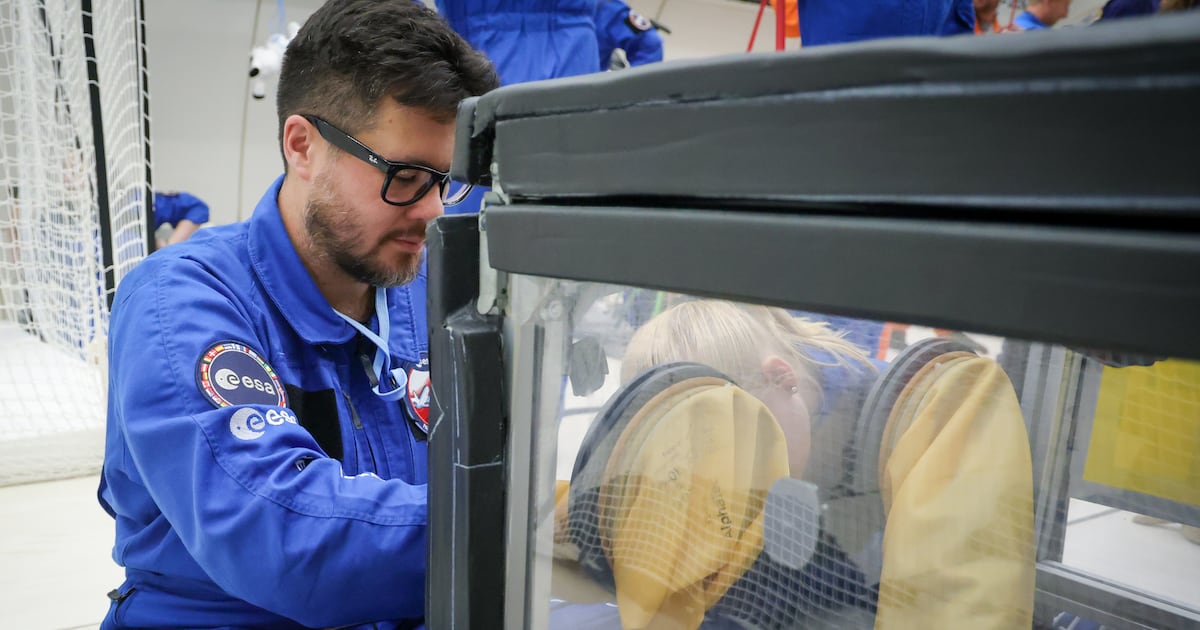Science
B.C. Anesthesiologist Explores Anesthetic Behavior in Space

Anesthesiologist Dr. Matthew Turnock from British Columbia is leading a unique research project that examines how anesthetic drugs behave in microgravity environments. This groundbreaking study, funded by the Canadian Space Agency, aims to address the challenges of administering anesthesia during space missions.
The research team experienced microgravity firsthand aboard an Airbus A310, where they conducted experiments simulating conditions astronauts face. “Your brain has no idea what is up and what is down,” Turnock said, reflecting on the intensity and excitement of the experience. For the first time, they floated as if they were in space, which provided an unprecedented opportunity to investigate the effects of gravity—or the lack thereof—on anesthetic distribution.
Anesthesia administration in space presents unique challenges. “In space, giving anesthetic is challenging because of the space and volume requirements,” Turnock explained. He noted that many anesthetics are inhaled, and an accidental disconnection in the circuit could anesthetize the entire crew, posing a significant risk. The research aims to ensure safety in these high-stakes environments.
To explore these concerns, Turnock and his team used CT images of a real patient to create a model of a spinal canal, filling it with simulated spinal fluid. They aimed to determine whether anesthetic medication could unintentionally migrate to the brain in a microgravity setting. “There’s a chance the medication could float up to the brain,” he said, referring to a phenomenon observed on Earth known as a “high spinal.”
After developing their model, the team traveled to France, where they utilized the Airbus A310 as a temporary laboratory. The aircraft executed parabolic maneuvers, climbing and then dropping to simulate brief periods of weightlessness. “Every time the aircraft crests that peak, you get about 25 seconds of zero gravity,” Turnock explained. “And it’s not simulated; it’s real zero gravity, exactly how an astronaut would feel in space.”
During these moments of true weightlessness, the team conducted their experiments. They hypothesized that without gravity, the anesthetic medication would not spread effectively. To their surprise, their findings confirmed this hypothesis. “If we remove gravity, we found that the medication actually wouldn’t spread at all,” Turnock stated.
The initial concern regarding the risk of high spinal anesthesia was alleviated, revealing instead an opposite problem—insufficient spread of the medication. “The medication doesn’t spread enough for it to work, but there are things we can investigate to perhaps promote the spread of medication,” he said. This revelation opens new avenues for research and development in the field of space medicine.
The team included Dr. Alex Suen, an anesthesiologist; Dr. Siobhan Wagner, an anesthesiology resident; and Adrian Tabari, a medical student from the University of British Columbia. Together, they are committed to advancing knowledge in the field of anesthesiology, particularly as humanity prepares for deeper space exploration.
This research not only contributes to the understanding of anesthetic administration in microgravity but also raises further questions that the team hopes to address in future studies. The collaboration between medical professionals and space agencies showcases the merging of disciplines in pursuit of safer practices for future space missions.
-

 Science3 months ago
Science3 months agoToyoake City Proposes Daily Two-Hour Smartphone Use Limit
-

 Top Stories3 months ago
Top Stories3 months agoPedestrian Fatally Injured in Esquimalt Collision on August 14
-

 Health3 months ago
Health3 months agoB.C. Review Reveals Urgent Need for Rare-Disease Drug Reforms
-

 Technology3 months ago
Technology3 months agoDark Adventure Game “Bye Sweet Carole” Set for October Release
-

 World3 months ago
World3 months agoJimmy Lai’s Defense Challenges Charges Under National Security Law
-

 Lifestyle3 months ago
Lifestyle3 months agoVictoria’s Pop-Up Shop Shines Light on B.C.’s Wolf Cull
-

 Technology3 months ago
Technology3 months agoKonami Revives Iconic Metal Gear Solid Delta Ahead of Release
-

 Technology3 months ago
Technology3 months agoApple Expands Self-Service Repair Program to Canada
-

 Technology3 months ago
Technology3 months agoSnapmaker U1 Color 3D Printer Redefines Speed and Sustainability
-

 Technology3 months ago
Technology3 months agoAION Folding Knife: Redefining EDC Design with Premium Materials
-

 Business3 months ago
Business3 months agoGordon Murray Automotive Unveils S1 LM and Le Mans GTR at Monterey
-

 Technology3 months ago
Technology3 months agoSolve Today’s Wordle Challenge: Hints and Answer for August 19









